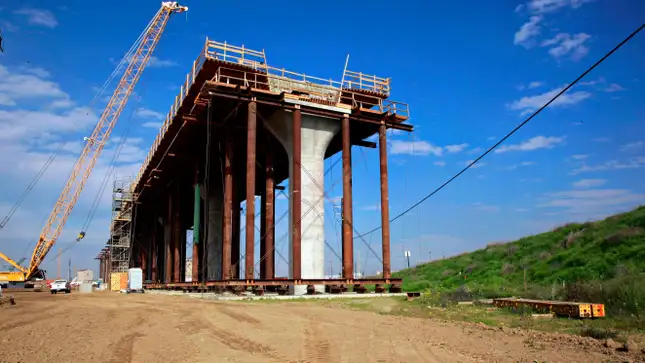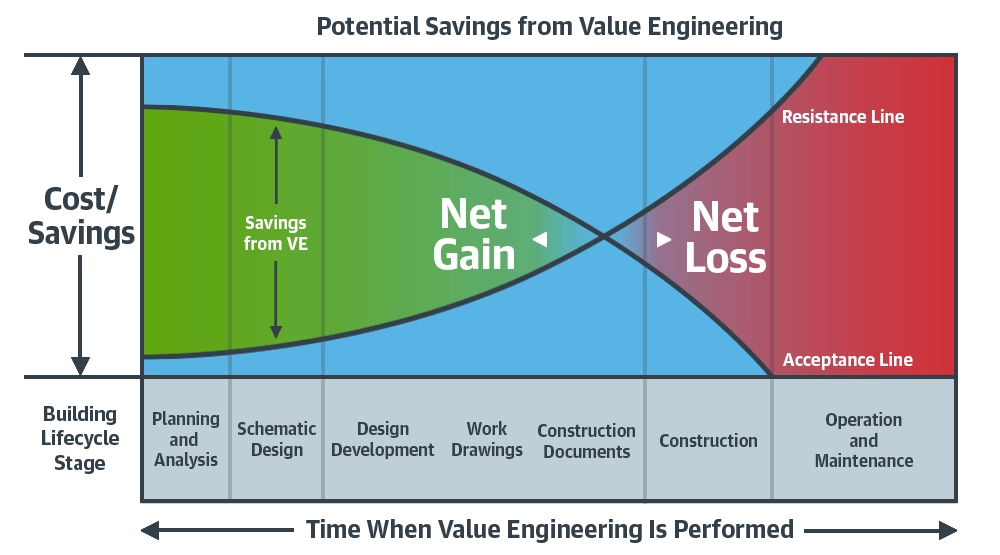The construction industry stands at a crossroads—where time-honored practices meet rapid innovation, and labor shortages clash with technological breakthroughs. It’s an era of both opportunity and disruption. From workforce challenges to AI-driven project scheduling, the built environment is being reshaped—brick by brick, byte by byte. Well….welcome to the job site of the future, a brave new world of robots, recycled bricks, and drones that might be judging your coffee breaks from above. While your foreman is still yelling about that concrete pour, the entire industry is shifting beneath your steel-toed boots. Let’s dig (get it?) into the key trends shaping the future of construction—one pun and panic attack at a time.
Author’s Note: For firms on the front lines of construction, the future isn’t a distant concept—it’s already here. Whether through AI-enhanced workflows, modular projects, or new labor strategies, the construction site of tomorrow is being laid today. Let’s build accordingly!
Labor & Workforce: Building with Fewer Hands
Once upon a time, you could yell “I need a guy for drywall!” into the void, and ten guys would show up. Now? You’ll get three texts back saying “Sorry, moved to Colorado to open a kombucha truck.”
The labor shortage is real, and it’s not just because Gen Z thinks manual labor is something you outsource on Fiverr. Between pandemic aftershocks, retirements, and the whole “work-life balance” revelation, finding people willing to work 12-hour shifts in 90-degree heat isn’t as easy as it used to be.
Labor Shortages
Persistent labor shortages continue to affect timelines, costs, and project outcomes. Despite increasing demand for skilled trades, younger generations are often steering away from construction careers, favoring roles with more flexibility or tech orientation. The result: a tighter labor pool and fierce competition for talent.
The Skills Gap
It’s not just a shortage of workers—it’s a shortage of qualified workers. As construction becomes more complex and tech-driven, the demand for specialized skills is outpacing supply. Training and upskilling programs are more crucial than ever, especially for roles involving digital tools, sustainable building techniques, and automation.
Aging Workforce
The construction workforce is aging, with a significant portion nearing retirement. The loss of institutional knowledge is a real risk. Companies must invest in mentorship programs, knowledge transfer systems, and incentives to recruit younger workers—before the industry experiences a “gray-out.”
Worker Safety
Construction remains one of the most hazardous industries. Advances in wearable technology, drone inspections, and AI-driven risk assessments are enhancing safety efforts, but creating a truly safe jobsite still requires a culture that prioritizes training, compliance, and proactive hazard identification.
Worker Wellbeing
Mental health and wellbeing are moving to the forefront. Long hours, physically demanding work, and job insecurity have taken a toll. Companies that promote a positive work culture, provide mental health support, and offer flexible scheduling where possible are seeing higher retention and productivity.
Building Information Modeling (BIM)
BIM is transforming how buildings are conceived, coordinated, and delivered. By creating a unified digital representation of a project, BIM enhances collaboration between architects, engineers, and contractors—reducing errors and costly rework.
Construction Management Software
Modern project management platforms now offer real-time tracking, mobile accessibility, predictive analytics, and integrated communication. These tools streamline operations and offer transparency across the project lifecycle.
Drones
Drones are increasingly used for surveying, site monitoring, and safety inspections. They deliver faster, safer, and more accurate data collection—improving decision-making while reducing the need for risky on-site tasks.
Robotics & Automation
Robots are being deployed for repetitive, labor-intensive tasks like bricklaying, rebar tying, and even 3D printing. These technologies help bridge the labor gap, improve precision, and accelerate project delivery, especially in high-volume or high-risk environments.
Artificial Intelligence (AI)
AI is being leveraged for risk analysis, scheduling, budgeting, and predictive maintenance. While still emerging, AI tools are showing promise in identifying inefficiencies and forecasting project bottlenecks before they occur.
Sustainability & Green Building: Building Smarter, Not Just Bigger
Sustainability is no longer a buzzword—it’s a baseline expectation across the construction industry. From energy-efficient design and innovative green materials to smarter waste management and stricter environmental standards, builders are rethinking every phase of the project lifecycle to reduce their footprint and meet growing client and regulatory demands.
Sustainable Design & Construction
Green building practices are no longer niche—they’re necessary. Certifications like LEED and WELL are becoming standard, and clients increasingly demand environmentally responsible projects. From passive design to net-zero targets, sustainability is central to modern construction.
Sustainable Materials
Innovations in materials—from cross-laminated timber to recycled steel and low-carbon concrete—are reducing the industry’s environmental footprint. Suppliers and contractors alike are re-evaluating sourcing strategies to prioritize renewable and recycled content.
Energy Efficiency
Energy-efficient design is a top priority, especially in light of rising energy costs and carbon mandates. Technologies such as smart HVAC systems, high-performance insulation, and dynamic glazing are becoming staples of energy-conscious construction.
Waste Management
Construction generates significant waste, but the tide is turning. Digital inventory management, deconstruction planning, and on-site recycling initiatives are minimizing landfill contributions and improving project sustainability metrics.
Project Management & Cost Control: Delivering on Time, On Budget
Managing time, cost, and uncertainty has become a high-stakes balancing act in today’s construction environment. With delays, cost overruns, supply chain disruptions, and evolving risks at every turn, successful project delivery now depends on agile planning, strategic sourcing, and proactive risk management.
Project Delays
Delays remain a chronic issue, often caused by labor shortages, weather events, or procurement challenges. Agile planning methods and real-time data tools are helping teams adapt and recover more efficiently.
Cost Overruns
Unexpected cost increases—from materials to logistics—can derail budgets. Accurate forecasting, contingency planning, and proactive procurement strategies are essential to avoid financial strain.
Supply Chain Disruptions
Global supply chain issues are still reverberating, making procurement a high-risk component of construction planning. Diversifying suppliers, increasing on-hand inventory, and leveraging local sourcing are emerging best practices.
Risk Management
The complexity of modern projects means that risk is ever-present. From compliance violations to cyber threats, companies must take a comprehensive approach to risk, using technology and training to anticipate and mitigate issues early.
Emerging Trends: Offsite Construction, Codes & Infrastructure Growth
As construction embraces efficiency and modernization, modular and prefabricated methods are gaining traction for their ability to reduce costs, timelines, and on-site chaos. At the same time, evolving building codes and a surge in infrastructure investment are reshaping the industry landscape—demanding greater agility, compliance, and innovation from contractors and project teams alike.
Modular & Prefabricated Construction
Offsite fabrication is gaining traction thanks to its speed, quality control, and waste reduction. Modular construction is ideal for housing, healthcare, and hospitality sectors where speed-to-market is key.
Building Codes & Regulations
The regulatory environment continues to evolve, particularly around energy use, safety, and climate resilience. Staying compliant means staying informed—requiring dedicated resources and strong relationships with local authorities.
Infrastructure Development
Infrastructure investment is rising globally, driven by aging systems, population growth, and climate adaptation. Opportunities in transportation, water, and energy infrastructure will shape the construction landscape for decades to come.
Final Thoughts: The Blueprint for What’s Next
Construction these days feels a bit like juggling power tools while riding a unicycle—challenging, unpredictable, and occasionally hilarious. We dove into the real headaches of the industry, from stubborn labor shortages and an aging workforce to constantly changing building codes that keep everyone on their toes (and city inspectors gleefully playing Whac-A-Mole). At the same time, the rise of tech—think drones, AI, and modular building like grown-up Legos—is shaking up how projects get done, promising speed and precision while trying not to overwhelm the folks still figuring out the new software.
Sustainability has gone from a nice idea to a must-have, pushing builders to get creative with eco-friendly materials, energy efficiency, and cutting down on waste. Meanwhile, project delays, cost overruns, and supply chain chaos keep everyone guessing, turning risk management into a high-stakes game of “what’s next?” And let’s not forget infrastructure—more roads, bridges, and water systems mean more opportunities (and potholes) ahead, plus a chance to finally put those fancy GPS graders to good use.
All told, the construction industry is navigating a wild mix of old-school grit and futuristic innovation, with plenty of curveballs along the way. But with a little humor, some smart planning, and a dash of tech-savvy, the builders of today are laying down the foundation for a smarter, safer, and more sustainable tomorrow—one brick, one drone flight, and one regulation update at a time.The construction industry is navigating a complex era—defined by workforce challenges, technological disruption, and mounting sustainability expectations. But with these challenges come opportunities: to innovate, to build smarter, and to create structures that serve future generations.
Companies that embrace digital tools, invest in people, and prioritize sustainability will not only survive this transformation……they’ll lead it.
References
ABC Rocky Mountain Chapter. (2025, January 24). Navigating the construction worker shortage in 2025. https://www.abcrmc.org/
Autodesk. (2022, March 2). What is sustainable construction? https://www.autodesk.com/
BigRentz. (2023, November 28). Top 10 construction industry trends for 2024. https://www.bigrentz.com/
Buildxact. (n.d.). 5 major construction industry challenges right now. https://www.buildxact.com/
ConstructConnect. (2025, March 10). US put-in-place construction forecasts: Spring 2025. https://www.constructconnect.com/
EY. (n.d.). How sustainability is reshaping the construction industry. https://www.ey.com/
Exploding Topics. (2024, May 2). 11 construction industry trends to watch (2024–2027). https://explodingtopics.com/
Forest Stewardship Council. (2024, December 24). What is sustainable construction? 4 considerations + examples. https://fsc.org/
Gocodes. (2021, October 19). 10 challenges facing the construction industry to know about. https://www.gocodes.com/
OpenAsset. (2024, June 6). The top 23 construction industry trends for 2024. https://www.openasset.com/
Procore. (2025, April 17). Tackling the top 10 construction industry issues. https://www.procore.com/
Quora. (2018, May 30). What are the interesting topics in construction management? https://www.quora.com/
Revizto. (2024, February 7). Top 15 construction issues & industry challenges in 2024. https://www.revizto.com/
Texas A&M University College of Architecture. (2025, January 21). The role of construction managers in sustainable construction. https://www.arch.tamu.edu/
The Access Group. (n.d.). What are the biggest challenges in the construction industry? https://www.theaccessgroup.com/
Travelers Insurance. (n.d.). Skilled labor shortages in construction. https://www.travelers.com/





